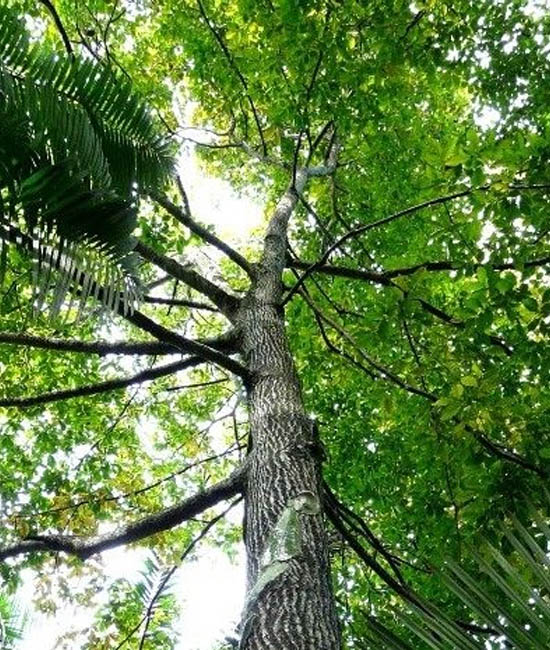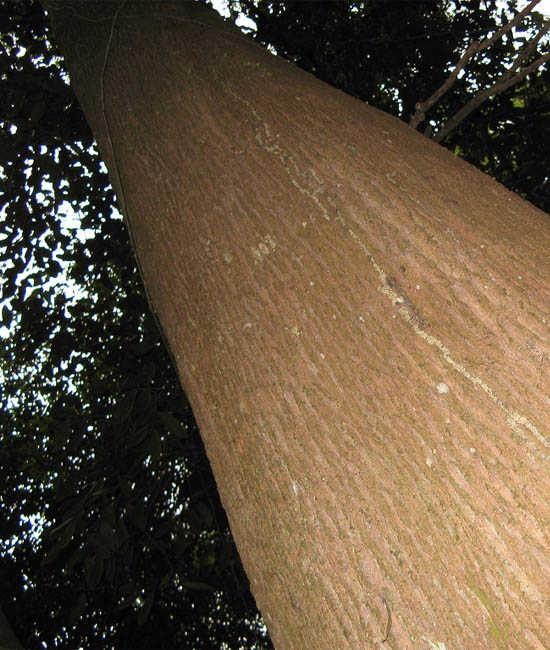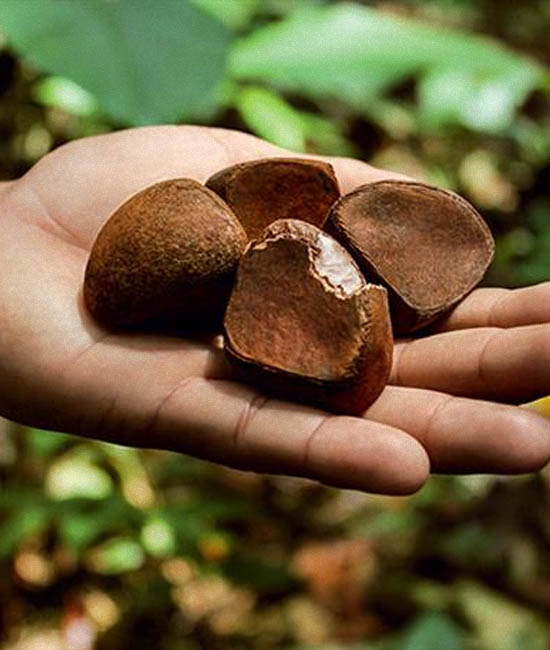Andiroba (Carapa guianensis Aubl.) é uma árvore de porte médio a grande, comum no ambiente amazônico, pertencente à família Meliaceae. Possui propriedades medicinais e madeira de alta qualidade. Entre seus nomes populares estão carapa, andiroba, andirobinha e andiroba-branca.
A andiroba é uma árvore de copa que pode atingir até 30 metros de altura. É uma planta que ocorre em toda a bacia amazônica, América Central e África. No Brasil, está distribuída pelos estados do Norte (Acre, Amazonas, Amapá e Pará) e Nordeste (Maranhão), predominando no domínio fitogeográfico amazônico. Ocorre em florestas de terra firme e de várzea. Em regiões com clima tropical úmido, floresce duas vezes por ano, sendo a primeira floração de agosto a setembro e a segunda de janeiro a fevereiro. Os frutos amadurecem de junho a julho e de fevereiro a março.
A árvore possui um tronco reto e cilíndrico e raízes com pequenos sapopemas. A casca é espessa e amarga, desprendendo-se facilmente em grandes placas. As folhas são compostas, com 4 a 9 pares de folíolos, apicalmente acumulados e glabras. A inflorescência é axilar e ramiflora. Suas flores são sesséis ou até 1,5 mm. O fruto possui néctar em vídeos espalhados na superfície. A semente contém proteínas, carboidratos, fibras, minerais e lipídios.
A casca da andiroba pode ser pulverizada e aplicada sobre feridas, servindo como agente cicatrizante para condições de pele.


O óleo de andiroba é um dos produtos medicinais mais vendidos na Amazônia devido às suas propriedades anti-inflamatórias e é indicado contra febre, vermes, bactérias e tumores. Em várias regiões da Amazônia, as mulheres são responsáveis pela extração do óleo das sementes de andiroba. O óleo é extraído quebrando as sementes em pedaços muito pequenos que devem ser aquecidos para serem prensados. Essa atividade pode render de 8 a 12 litros para 40 quilos de sementes, dependendo da eficiência do trabalho utilizado. Muitas comunidades extraem o óleo sem a prensa, e, portanto, o rendimento pode ser menor. Sob condições de temperatura amena, o óleo pode adquirir a consistência de vaselina. O óleo é de cor amarelo pálido e amargo e contém substâncias químicas como oleína, palmitina e glicerina. Produtos como sabonetes, cremes, pomadas e velas também podem ser feitos com o óleo de andiroba como essência principal. As velas feitas com o bagaço de semente de andiroba afastam os mosquitos vetores, transmitindo doenças como a dengue (Aedes aegypti) em áreas rurais do interior da Amazônia. O óleo ainda é usado em lâmpadas para iluminação. No lado oeste da Amazônia, no estado do Acre, as comunidades produzem óleo de andiroba apenas para consumo local.

A andiroba é muito útil na indústria madeireira. Sua madeira é de excelente qualidade, sendo resistente ao ataque de insetos e térmitas. Possui uma cor vermelho-acastanhada brilhante e pode ser confundida com a madeira de mogno, sendo chamada de “mogno falso”. Pode ser utilizada na construção de móveis, pisos e compensados e tem uma alta demanda de exportação para o mercado externo.
A andiroba é uma espécie indicada para áreas de reflorestamento comercial na Amazônia, pois é uma espécie nativa da região e apresenta boa regeneração natural em áreas de cerrado de planalto. Está adaptada para crescer e regenerar sob o dossel florestal. Tem potencial para plantações de enriquecimento, pois responde favoravelmente à sombra. O plantio de andiroba deve ser realizado em áreas que já foram alteradas por atividades humanas, como agricultura e pecuária, ou em capoeiras jovens.
É uma espécie que possui boas características ornamentais e pode ser usada em paisagismo urbano. Também é indicada para plantio em áreas degradadas de várzea úmida. Tem um bom desenvolvimento na região centro-sul do país, especialmente na costa atlântica.
Benefícios da andiroba:
As sementes de andiroba são muito ricas em vitaminas e minerais e, portanto, têm vários benefícios para a saúde, tais como:


© 2021 Seeding Amazon – Todos os direitos reservados. CNPJ: 43.963.207/0001-74
| Cookie | Duração | Descrição |
|---|---|---|
| cookielawinfo-checkbox-analytics | 11 months | This cookie is set by GDPR Cookie Consent plugin. The cookie is used to store the user consent for the cookies in the category "Analytics". |
| cookielawinfo-checkbox-functional | 11 months | The cookie is set by GDPR cookie consent to record the user consent for the cookies in the category "Functional". |
| cookielawinfo-checkbox-necessary | 11 months | This cookie is set by GDPR Cookie Consent plugin. The cookies is used to store the user consent for the cookies in the category "Necessary". |
| cookielawinfo-checkbox-others | 11 months | This cookie is set by GDPR Cookie Consent plugin. The cookie is used to store the user consent for the cookies in the category "Other. |
| cookielawinfo-checkbox-performance | 11 months | This cookie is set by GDPR Cookie Consent plugin. The cookie is used to store the user consent for the cookies in the category "Performance". |
| viewed_cookie_policy | 11 months | The cookie is set by the GDPR Cookie Consent plugin and is used to store whether or not user has consented to the use of cookies. It does not store any personal data. |